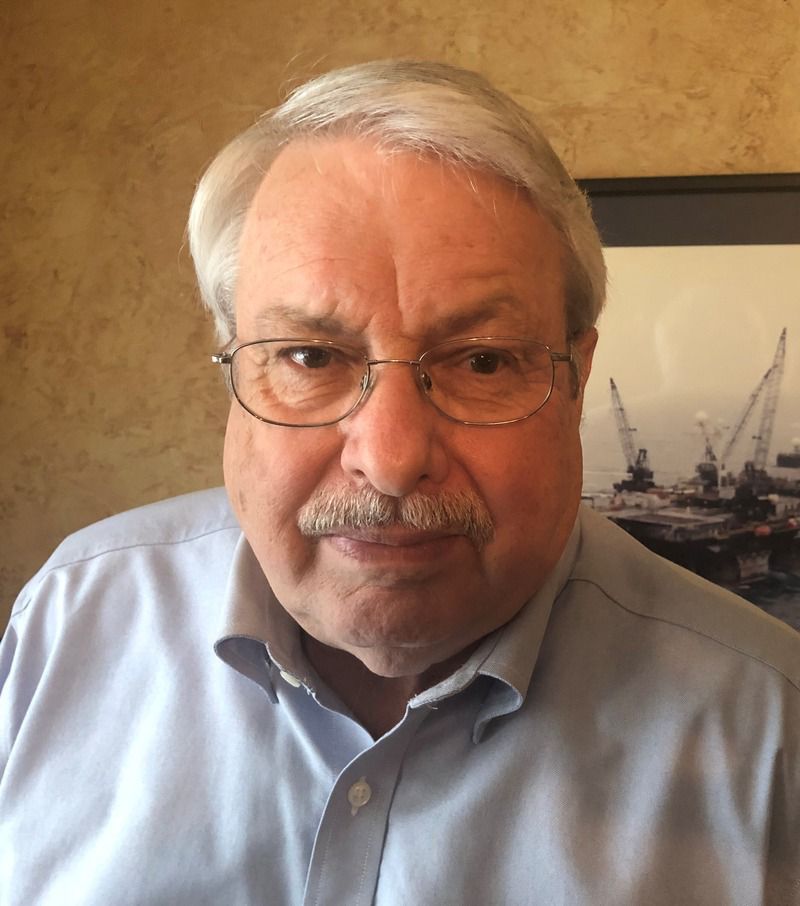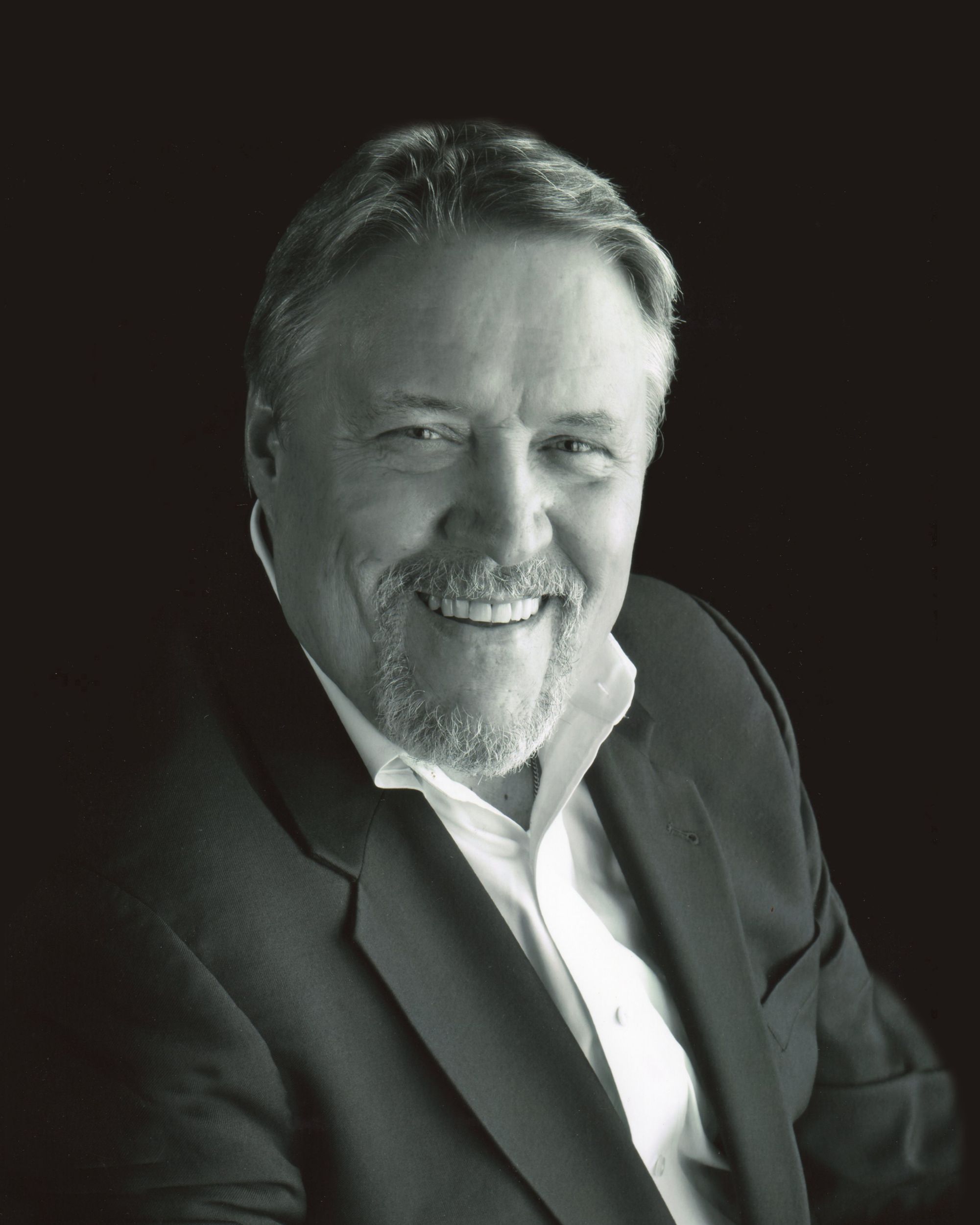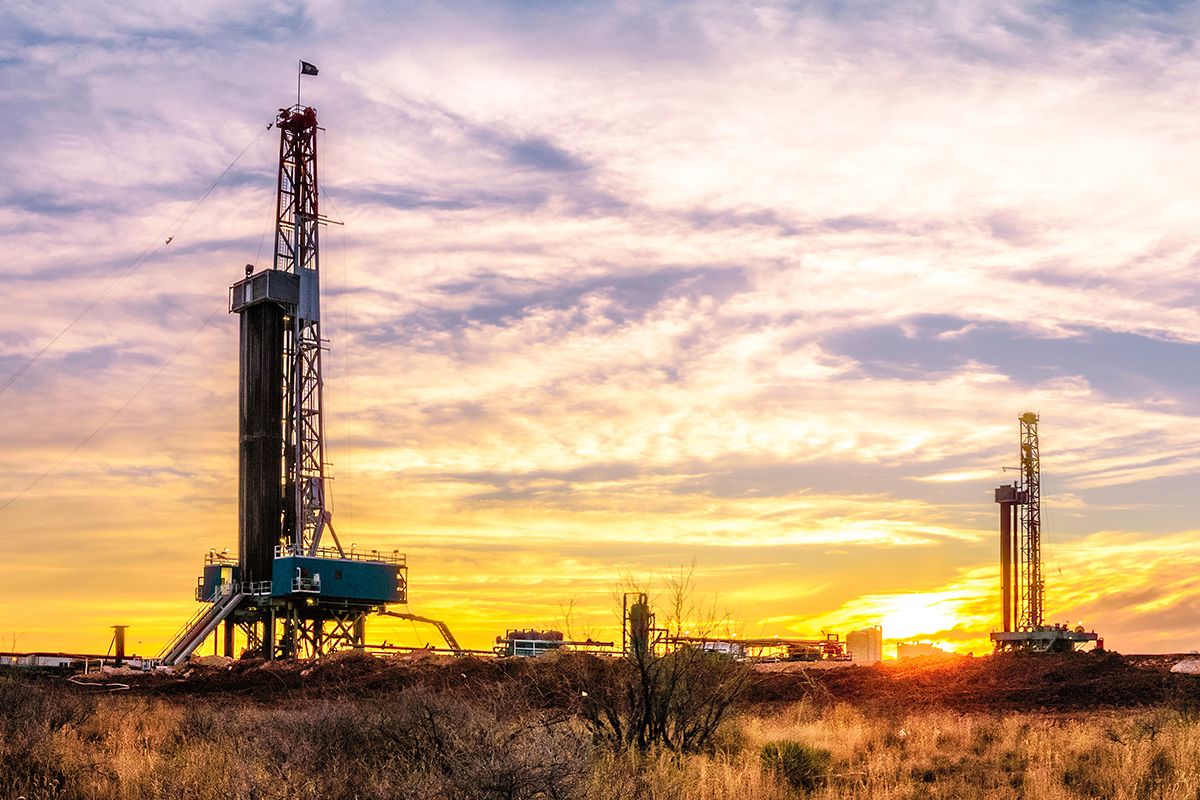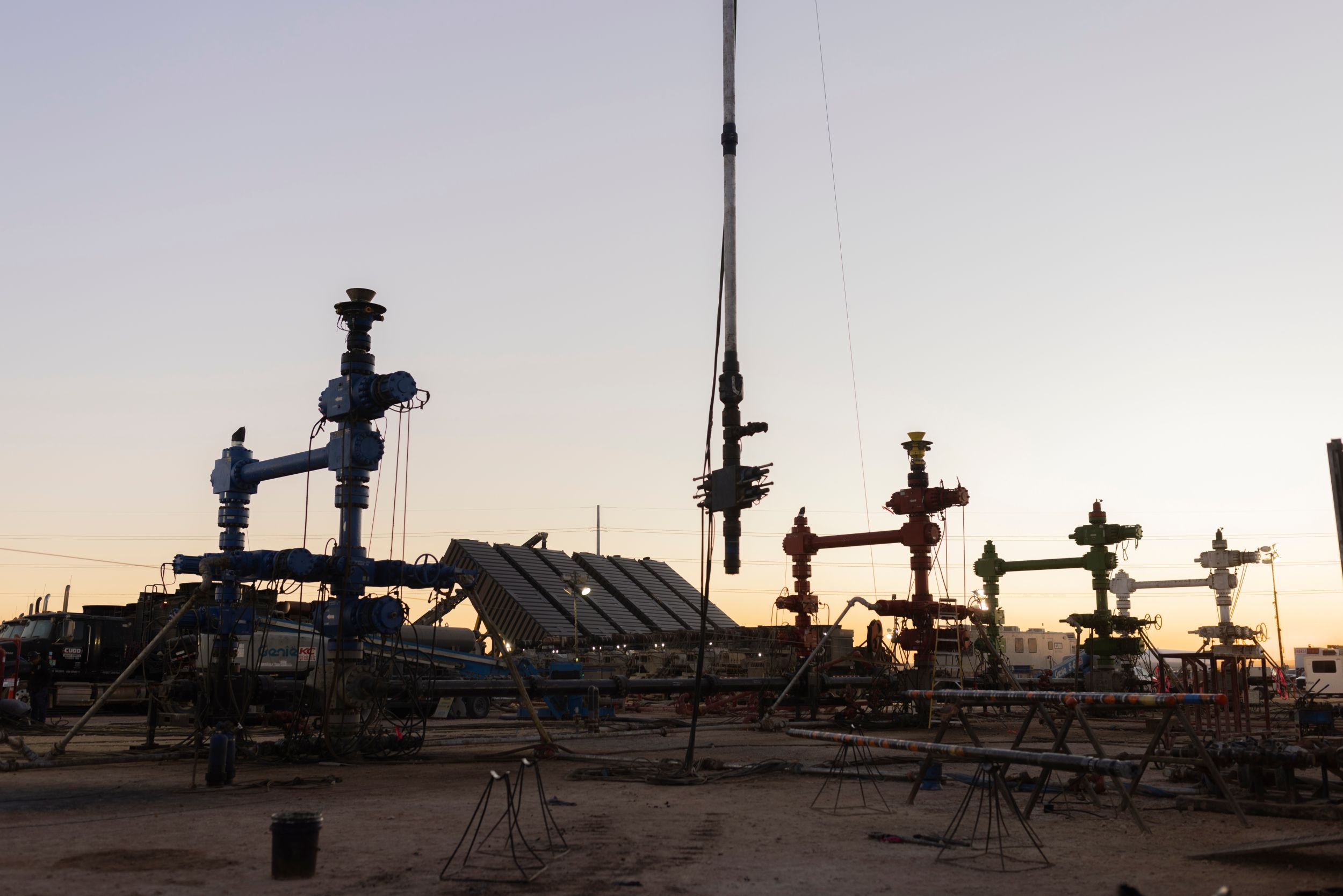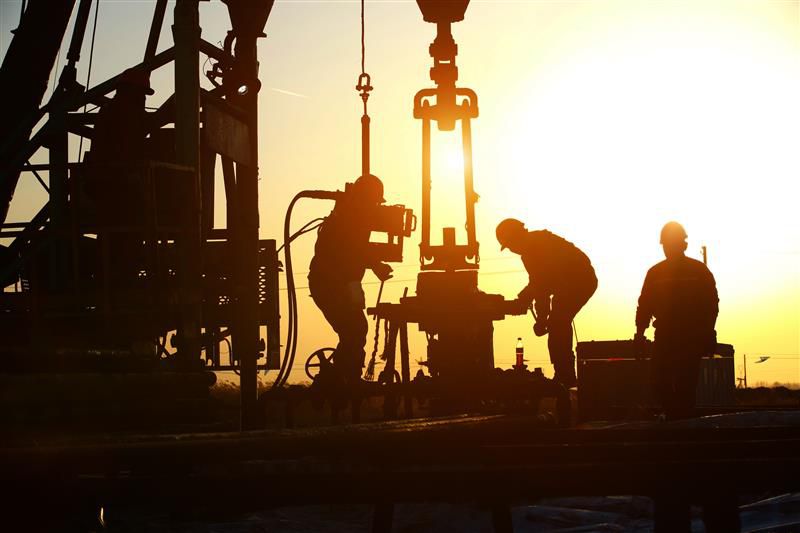Read the full episode transcript
00:00:01 Speaker 1
The Energy Pipeline is your lifeline to all things oil and gas. To drill down deep into the issues impacting our industry, from the frack site to the future of sustainability, hear more about industry issues, tools, and resources to streamline and modernize the future of oil and gas. Welcome to the Energy Pipeline.
00:00:25 KC Yost
Hello everyone, and welcome to this episode of the Energy Pipeline Podcast. Today our topic is the Gulfstream Natural Gas Pipeline. We're fortunate to have Ron Hoepner, who is the VP of Engineering and Construction on the project, as our guest. Welcome to the Energy Pipeline Podcast, Ron.
00:00:43 Ron Hoepner
Thank you very much. It's a real pleasure to be here. As you can imagine, the whole Gulfstream project was the crown jewel of my 50-year duration in the pipeline industry. So it's a good thing to be able to talk about it, kind of to resurrect it, because, as you remember, or you may remember this coming summer, it will be 22 years since it's in service date. So again-
00:01:18 KC Yost
Excellent, excellent.
00:01:18 Ron Hoepner
-Again, thanks very much for having me on here. It's a joy to talk about this project.
00:01:28 KC Yost
Great, great. Well, we're glad you're here. So before we get into the specifics of the project, Ron, let's take a few minutes if you would please and share a bit of your background with our listeners.
00:01:38 Ron Hoepner
Okay. I graduated with a BSME from Lamar University in Beaumont in 1970, and upon graduation took a job with ARCO Pipeline in Independence, Kansas, for three years. Then following that, I came back and went to work for an engineering company in Houston called Pipeline Technologist, or PLT Engineering, and I spent 14 years with them. Nine years of that was spent in England and Holland. And I came back to the States in 1982 and continued to work for them until 1987, and I had the opportunity to go to work for Transcontinental Gas Pipeline here in Houston in'87 and spent 20 years with Transcontinental Gas Pipeline, or what became Williams Gas Pipeline in'95. During the 20 years I was here, of course, that was when I was given the assignment to work on the Gulfstream Natural Gas System. Basically, they took a team out of both, from the organization of Williams and then also from the organization of Duke, to form that team in kind of separate offices where we worked and put it into service. So after Gulfstream, I continued with Williams until 2007, retired and went to work for Spectra Energy. They had some interesting projects up in the northeast and worked for them for six and a half years, left them and went to work for Kinder Morgan. They had some interesting projects that they were proposing up in Massachusetts area, and so I worked on the feasibility of that, and we continued to work on that until they could not get markets in place and canceled the project. And pretty soon thereafter, I decided that, we kind of mutually decided that I should leave there. So I left there and spent a little time at home for a while, and then went to work for Boardwalk Pipeline. They had a large project out in West Texas. They were contemplating, and so we worked on the feasibility of that and routing of that, and following that again, they couldn't come up with the market or the suppliers for that, and they canceled the project and was fortunate enough to get a little project in the east part of Texas. It was 20 miles of 30 inch, and that pretty much crowned out my project experience. We put that line into service in August of 2020, and beyond that, I took my final bow and exited stage left. So since that point, I have been retired at home and not actively pursuing other employment. Is that...
00:05:34 KC Yost
So two things come to mind when you say that. Number one, you and I talked earlier before we started recording that it's six Saturdays and a Sunday, and that's where you are. I'm headed in that direction, but it sounds to me like you had as much of a hard time retiring as I'm finding it-
00:05:56 Ron Hoepner
Oh, absolutely.
00:05:57 KC Yost
-To retire. Always finding a little project to work on.
00:06:03 Ron Hoepner
As you know, in 2020, that was the peak of the COVID stuff, and there really wasn't much work about it that point. And so I was okay financially and so decided it's not worth the effort to go out and beat the bushes anymore. And if something interesting comes along, I would consider it, but right now I'm fully retired.
00:06:36 KC Yost
Yep. Okay. Well, so you basically got two old pipeliners talking about a project 20 years ago that we just enjoy talking pipeline. Granted, glad to have you here. So let's talk about the project. So I'll tell our listeners that I've been very excited to have you on to talk about Gulfstream. I mean, there are some really cool reasons why people need to know about the Gulfstream project. First, when it was built, it was the largest offshore pipeline in the world, largest pipeline in the world now, 22, 23 years ago. But even with that, it's still now the longest pipeline in the interstate pipeline in the Gulf of Mexico, transmission line in the Gulf of Mexico. So, I mean, you're still at the cutting edge and breaking that barrier with the line. What else? It's the first interstate pipeline in the Gulf of Mexico, first offshore pipeline to come onshore in Florida, which is an amazing task. Knowing the environmental issues about that. One of the things I'm most tickled about is that, being a member of the Houston Pipeliners Association, the project was named Project of the Year in 2003, and you actually won the award of the Pipeliners of the Year for all the hoops you jumped through as being the leader of the team that overcame the challenges in completing the project on time. So congratulations again, 20 some odd years later on Pipeliners of the Year, and good. But anyway, just to give a background, that's why I wanted to talk about this subject. So let's get into the project. Give us some background. How did the project come about, and what was your schedule? Weren't you under a really tight schedule once you took the project over?
00:08:37 Ron Hoepner
Oh, absolutely. As you know, Florida is a big market for gas, for electricity, for the conversion to electricity. And for eons, the only gas that was brought into the state came from the Florida Gas Transmission. Had pipelines that went the length of the panhandle and down on the east coast for various deliveries along there, and that was the only gas supply they had. And in the late 80s when I was with Transco, or Transcontinental Gas Pipeline, we were asked by our business development group to determine a feasibility of constructing a pipeline from basically Mobile to the Tampa area. And so we launched an effort in that and did some offshore survey work to identify a potentially feasible route, and we did a little estimating, a little bit of feasibility study, and I'm not sure whether it was determined to be too expensive or whether there was not a market or whatever there was, but it kind of dropped at that point. Later in the later 1990s, various companies became very interested in this, one and the one that got out of the gate first was ANR, and they were looking at a pipeline from, again, offshore, from Mobile to Tampa. Williams elected to continue to work on a similar routing, albeit slightly different in different shore approach on the Florida thing. And Duke, at that point, was looking at an all-onshore route that went down the center of the Florida state. After much study work, Williams and Duke got together and formed a joint venture, and continued to work on the project and to get into the final design of it, to put together a FERC certificate, and to begin that process. At that point, ANR was a half a step ahead of us. They got their FERC application in first, and we were a few weeks behind, but they got theirs in first, and they were well on their way to getting their first certificate. When all of a sudden, El Paso elected to buy Tennessee Gas and ANR. And as a condition of that purchase or the approval of that purchase, they were required to offload what they called the Gulfstream Project, and Duke and Williams being... We were very willing to step in and purchase that asset. The FERC certificate was issued in January of 2001, and the mandate for that was that we would have an in-service date no later than June of 2002, which basically gave us 18 months. Fortunately...
00:12:52 KC Yost
Good luck and God's speed.
00:12:56 Ron Hoepner
Fortunately, ANR had finalized the order for the pipe, and in January we sent a group to Europe to witness the first receipt of plate and the first rolling of steel for the project. We are obviously required to accept the specifications for that pipe that were generated by ANR and other things that they had done. They had contracted with Stolt Offshore for the construction of the offshore segment of that, which was obviously, it being 450 miles, would be... The absolute most critical part of the project would be to get that done. Interesting part of the steel, and you won't believe this, but we actually acquired steel for$ 500 a ton, which-
00:14:03 KC Yost
Oh, my.
00:14:05 Ron Hoepner
-Astounded us, and the quality of the pipe was absolutely superb. The bulk of the pipe for offshore was manufactured in Europe, and the onshore pipe was manufactured by Berg in Panama City, so very, very good quality pipe. They managed to keep up deliveries of that, and we moved along from there.
00:14:43 KC Yost
So three thoughts on this, if you don't mind, Ron. Number one, having the pipe already in the queue to get things going, I'm sure made life a lot easier for you in getting that squared away, and$ 500 a ton is what a quarter of what we're paying now a day?
00:15:05 Ron Hoepner
I think that's right.
00:15:06 KC Yost
Per ton per steel. It is a remarkable number. Second, you mentioned Stolt. Were there any contractors in the Gulf that had the capability that, or did you have even time to take a look at that? You just did inherited what ANR had done and ran with it?
00:15:27 Ron Hoepner
In working through what we call the Buccaneer project, which was the Williams/ Duke name for the project, we had actually gone through the preliminary selection there and had contracted, not contracted, but agreed to contract with Saipem; it's out of Italy. Again, with their large barges that they did, but there was no vessels in the United States that could handle this type of lay. It being through... The maximum depth on that was 850 feet, which is not insignificant. So it specialized barge. The barge that Stolt selected to do the project had been refurbished prior to them contracting with it. I'm sorry, the barge itself was originally built back in the early 70s and was used in the North Sea for some of the big projects that were there. It was ETPM 1701; I believe it is what it was named at that point, and I'm sure over the years it had changed hands a number of times, but when Stolt acquired it and refurbished it, they reflagged it as the LB 200. But it's...
00:17:09 KC Yost
And you said that this was an S-lay barge?
00:17:15 Ron Hoepner
Yes, it was an S-lay barge, with a significant...
00:17:16 KC Yost
So you didn't do a J-lay. How long was the stinger?
00:17:19 Ron Hoepner
I think it was about 700 feet. So not insignificant, but with water depths of 800 feet, you need to get a good arc on the thing before you let go of it.
00:17:35 KC Yost
Sure. One more question before we move on. Was any of the Buccaneer line onshore, or was it offshore as well?
00:17:47 Ron Hoepner
There's small differences, but basically the same route as the Gulfstream project. Obviously, being the owner of the Buccaneer project, we thought our route was superior to theirs in various ways, but with us having... With the FERC certificate being issued for the Gulfstream project, our management said, "Thou shalt use the Gulfstream route with no changes in it." But the Gulfstream route was not too terribly different from the Buccaneer route. We came ashore north of Tampa and went inshore, and the Gulfstream route went underneath the Sunshine Bridge up through the Tampa Bay and onshore in the eastern part of the bay there.
00:18:48 KC Yost
As someone who's looked at a number of pipelines to run from, let's say Mississippi, Louisiana, Alabama over into Florida and try to get around the Florida Panhandle, you learn how to spell Andalusia, Alabama, the little town of Andalusia, because everything has to stay out of the Florida Panhandle that way, but smart on you guys to go offshore. So anyway, I know we're talking here, and I want to make sure we get all this stuff in. Let's talk a little bit about the gathering system. Phase one gathering system was initially just in Alabama, correct?
00:19:27 Ron Hoepner
Yeah, that's correct. And it remains in Alabama; of course, it connects to the Transco system down there or the Williams system down there. I think that they've got interconnects with Shell that comes onshore. They've got that big, sour gas plant there. I forget the name of that project now, but they've also got interconnects over in Mississippi that is used. It goes offshore, Pascagoula, Mississippi, and comes back onshore and gets into the suction side of the Gulfstream compressor station.
00:20:14 KC Yost
Sure, I laid a pipeline connecting a number of those sour gas to the old United Gas system, probably 30 some odd years ago, right after Transco laid their line out of that area. So it's been a good while, but I do know the area pretty well.
00:20:34 Ron Hoepner
As a matter of fact, I think that the Gulfstream system actually connects to some of the facilities that you built.
00:20:47 KC Yost
Oh, good, good, good. So you're pushing natural gas from Alabama to Florida. I suspect you had significant compression in Alabama.
00:21:01 Ron Hoepner
Absolutely. Under the... I am sorry I got a background noise here with a phone. Anyway, yes, we did, and it was designed as a two plus one, two operating, one spare total install horsepower was, I think, 116, 000 horsepower, which you can do the math on that. These were all what I would refer to as jet engines. They were Rolls-Royce-driven compressors, so massive compressors. But the other unique part of that compressor station was it included gas processing to get the dew point of the gas that's going to be delivered into the Gulfstream system to a point where no liquids would be formed in the offshore system, given the temperature extremes and the pressure extremes of operation through that. So very unique design.
00:22:17 KC Yost
Yeah, you literally had almost 500 miles of pipeline there, and the old rule of thumb is 10 pounds of water per M for water content in the natural gas, and you were pushing it and cleaning it down to nearly zero.
00:22:36 Ron Hoepner
I believe that's the case, then. And the reason for that was that bringing in, even as retrograde condensation, bringing in liquids into Florida was a real no-no; they didn't want to see gas processing or liquid processing, or liquid handling facilities. So coming into Florida, there's a very small knockout drum, but it was certainly not a slug catcher that you would normally expect to see at the end of an offshore pipeline..
00:23:21 KC Yost
Gotcha. Gotcha. So let's get to the meat of the project. Let's talk about the offshore portion. I suspect there are a number of challenges and give us some background on that, please.
00:23:32 Ron Hoepner
Yeah, lots of challenges. One, of course, you've got to have the pipe anchored, and we contracted with Brad Rowe Price, Brad Rowe Shaw, whatever they're called now, for the concrete coating of that. We went a little bit extreme when we specified concrete densities of, I believe it was 200 or 220 PCF, which you probably remember, 190 PCF, but they were able to contract with iron ore suppliers in South America for a specific iron ore that would get us up to 200 or 220 PCF for that. Which it just reduces the amount of concrete needed and the concrete thickness required, but in getting the biggest... Or one of the biggest challenges we had was, ANR had not contracted for that, and so we contracted for it, and we got some pretty good discounts because we sole source through Brad Rowe. But as we were releasing that, they were required to come in and develop a new yard in the Mobile area that would be accepting the pipes from ships coming in from Europe, and they were also setting up a yard for concrete coating applications in Tampa. We looked for other potential intermediate sites along the coast of Florida but were not successful with that arrangement. And so, we worked with the two sites that we had, which basically meant in the middle you were having to, your supply vessels were having to go upwards to 200 miles to get from shore to out to the lay barges at that point. So very tight-
00:25:46 KC Yost
How many joint pipe...
00:25:48 Ron Hoepner
-Scheduling onthat, because we had to ensure that there was concrete-coated pipe available for lay operations continually. The impact is that if we had to shut the lay barge down, the impact was about a half a million dollars a day for standby time for the barge and for the supply vessels. So that was something that we had to stay on top of, and they had to make some adjustments during the course of that. They ended up bringing another concrete coating plant onto the mobile site to make up some lost time that they had, but ultimately, we never had a stoppage, and so that worked out really well.
00:26:42 KC Yost
Just imagining the logistics that you're dealing with, knowing that you, from start to finish had 18 months to get that completed, you had to have all of your ducks in a row in order to make that happen. I just can't imagine the logistics meetings-
00:26:59 Ron Hoepner
Absolutely.
00:27:00 KC Yost
-That you had probably every day or twice a day.
00:27:03 Ron Hoepner
Absolutely. And this was a unique project because every component of the project was a critical path. The compressor station was a critical path. The offshore was a critical path. The onshore was critical path; everything you start here, but you end there, and it all had the same end date. It really was magnificent to see in that all of the contractors and the operating companies, and the suppliers all worked in unison. We were all very cognizant of the in-service date, and we were all working toward completing that project in time.
00:27:50 KC Yost
Sweet, sweet. Good, good. Let's talk a little bit about the onshore delivery in Florida, about the design and construction there. We'll just keep going downstream.
00:28:04 Ron Hoepner
I mean, it's pretty standard stuff. We bid that out, and we selected Sheehan as the contractor for that work. As you know, Sheehan is no longer working, but pretty standard stuff. The hiccups were in scheduling to ensure that we had adequate right of way to get them moving in directions. And in the course of the 150 miles we laid, I believe there were seven HDDs that we were building as a part of that work. So again, a lot of scheduling there. Big problems that we had when we acquired the project, the onshore design was not very firm. We had to go in and resurvey to develop better property plats and property drawings to allow construction or allow right of way acquisition, which was a real problem. And it really put the onshore and on the critical path. The other big deal that we had onshore was, at the outset, we had only contracted for about 20% of the capacity of Gulfstream, and so their business development people were scrambling to get more gas capacity contracted. That ultimately didn't happen, but nonetheless, that was a big problem for us. Right away was a significant issue in that the right away costs were very high, and our schedule did not allow for condemnation. And so we negotiated our way through, and we could use the threat of condemnation, but ultimately, we were not forced to use it and settled on the steps in some cases and got it done that way. We had an interesting situation at one of the meter station sites. We acquired that property, and it was owned by a mining company, and they came in and stripped mine across that property immediately before we took possession of it. So we were building on excavations.
00:31:06 KC Yost
So with all of this going on, the logistics, the strip mining coming in and leaving you high and dry, redoing the survey in Florida, doing all of this stuff, did you meet the schedule?
00:31:21 Ron Hoepner
We were four hours from... We met it by four hours.
00:31:27 KC Yost
Excellent. Excellent.
00:31:30 Ron Hoepner
We had, of course, hydro-tested and de-watered, and we did the drawing from Mobile toward Tampa. My understanding is they said they had rented every piece of air compression that was available on the Gulf Coast to set it up to, I think we ran two trains of pigs from that, betting on the comm that knowing that if we couldn't get dry gas after the second was removed from the pipeline, we would not meet schedule. So we received the pigs, we tested the gas, and it met spec.
00:32:25 KC Yost
Sweet.
00:32:27 Ron Hoepner
So we were four hours from not making the schedule.
00:32:33 KC Yost
So that's a perfect example of making it by the skin of your teeth.
00:32:36 Ron Hoepner
Oh, absolutely. And there was-
00:32:37 KC Yost
Good job, good job.
00:32:40 Ron Hoepner
-No end-of-hand ringing with our management and the business development people. And are you going to meet schedule? Are you going to meet schedule? Yeah, I hope.
00:32:57 KC Yost
Now the project, so that was phase one that you got done. Now the project's, what gone through phase six now? inaudible.
00:33:10 Ron Hoepner
The next phase of the project was an extension across and into Eastern Florida. I think it was another 100 miles of pipe that that was designed to get into eastern Florida. And those designs were being done beginning in about August of 2001. So while we were constructing phase one, we were already designing the phase two work. Ultimately, the phase two work went into service in 2005. And since then, it's been pretty regular expansions until, I think, 2020 or 2022, when phase six went into service. And I think, I forget what the ultimate capacity of it... We had designed phase one for 1.3 BCF. And so, I don't know what the current capacity of the system is, but it's interesting.
00:34:39 KC Yost
But none of the pieces-
00:34:39 Ron Hoepner
When we went into service, we had 20% of the capacity was contracted, and within the first year, the pipeline was full.
00:34:52 KC Yost
Sweet, sweet, sweet. Now, I want to make sure that we're clear here. Phases two through six did not have the time constraints that you faced in phase one.
00:35:03 Ron Hoepner
No. They were done under more reasonable timeframes.
00:35:12 KC Yost
Yeah, no, I get it. I get it.
00:35:15 Ron Hoepner
We were able to kind if help that along, but there was no helping with Gulfstream. They had already made agreements and everything, and we were required to perform-
00:35:27 KC Yost
You were committed.
00:35:27 Ron Hoepner
-In the constraints of that.
00:35:28 KC Yost
Sure, I get it. I get it. Well, I've enjoyed the heck out of this conversation. I appreciate it, Ron. So is there anything else you'd want to share about Gulfstream that we haven't talked about?
00:35:40 Ron Hoepner
I would. There's a couple of things. One, I would like to recognize the former president of Williams Gas Pipeline; you may remember him, Cuba Wadlington.
00:35:59 KC Yost
Absolutely.
00:36:00 Ron Hoepner
He was instrumental in getting Williams management to agree to contract, move forward with the project, even with the lack of customers. And unfortunately, Cuba passed away in December of 2001. So he missed the in-service date, which I'm sure that he would've relished knowing Cuba, but very sad that he didn't make that because he was so instrumental in making it happen.
00:36:42 KC Yost
Truly an outstanding individual. Absolutely. Good man. Good man. Anything else you want to share?
00:36:49 Ron Hoepner
We had talked a little bit earlier... The lay barge that we used, we had employed automatic welding, and for the first time that Williams had allowed it, we used automatic ut on it.
00:37:13 KC Yost
Good, good. That's cutting edge technology.
00:37:17 Ron Hoepner
Yeah, I don't think that it was cutting-edge, but it was a first for Williams to use it. And of course, the lay barge operation lends itself to automatic in that it's fixed positions for welding, and so you don't have any movement of the equipment or anything like that. So all the good stuff.
00:37:41 KC Yost
Perfect. Yeah, very good stuff. Well, thanks very much, Ron. Thanks very much. Mentioned to you right now, for the listeners, if anyone has any questions or detailed information that they want to pass on to Ron, go ahead and email me. I'll give you my email address here in a little bit. I'll be happy to pass it on. I've known Ron for 30 plus years and hope to know him another 30 some odd years. But in any case, I'll be happy to pass the information on. So anyway, thanks, Ron, for taking the time to visit with us today outstanding discussion. And I want to thank all of you for tuning into this episode of the Energy Pipeline Podcast sponsored by Caterpillar Oil & Gas. If you have any questions, comments, or ideas for podcast topics, including emails to Ron, feel free to email me at kc.yost@oggn.com. I want to thank my producer Anastasia Willis and Duff, and everyone at the Oil and Gas Global Network for making this podcast possible. Find out more about other OGGN podcasts at oggn.com. This is KC Yost saying goodbye for now. Have a great week and keep that energy flowing through the pipeline.
00:38:57 Speaker 1
Come back next week for another episode of the Energy Pipeline, a production of the Oil and Gas Global Network. To learn more, go to oggn.com.


